Situated in a gated community with low boundary gardens and repetitive cookie-cutter homes, Atulya is a 6500 sq. ft. home designed by Envisage for a progressive, modern couple that wanted a home to have its own unique identity. With diverse backgrounds from cities like Mumbai, Meerut, and Patna, the couple decided to settle in a personalised and combinational haven in the cosmopolitan energy of Gurugram.
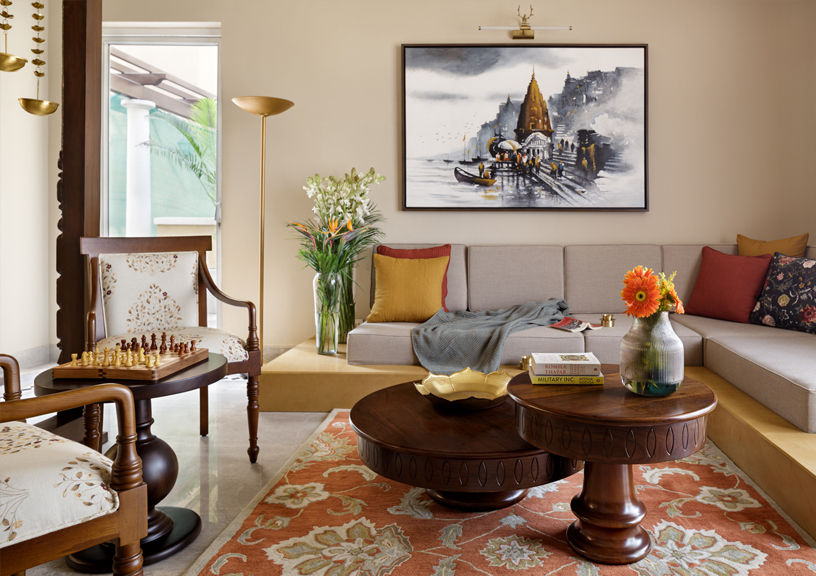
This two-storey bungalow stands for hospitable contemporaneity brought together by the warmth of classical design elements. The design bridges the colonial era of Indian design to modern lifestyle requirements with subtle visual textures and colours and is an amalgamation of the best creations in art, furniture, and furnishings with sublime functional brilliance.
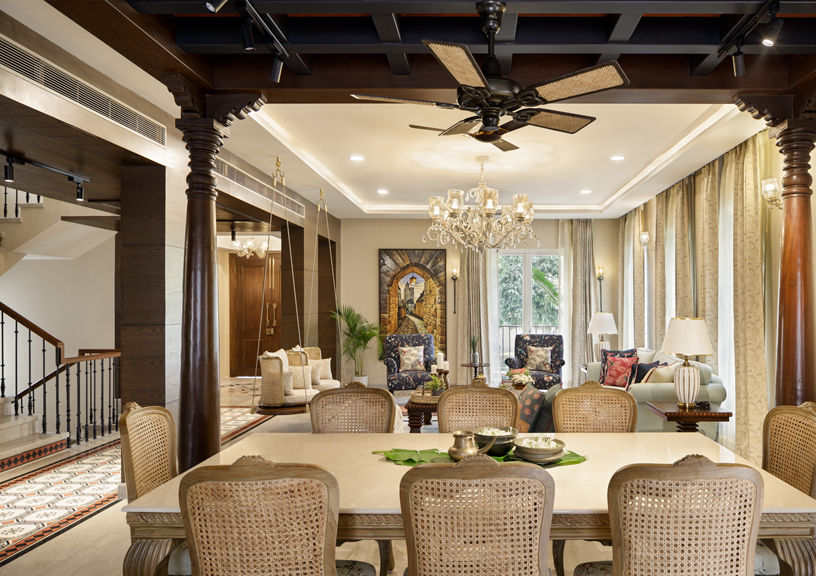
“The design intent was to curate interiors that bloom to life with distinctive artwork and contradicting details that coexist beautifully. The couple’s vision of a classic Indian household packed with a punch of contemporary luxury has translated into a lavish and cheerful home by incorporating several design curations and harmonising them well within financial and timebound limitations. The layout comprises five bedrooms, living spaces, a kitchen and dining, a yoga room, a study, and a puja space with an outdoor garden,” shares Design Head of Envisage Meena Murthy Kakkar.
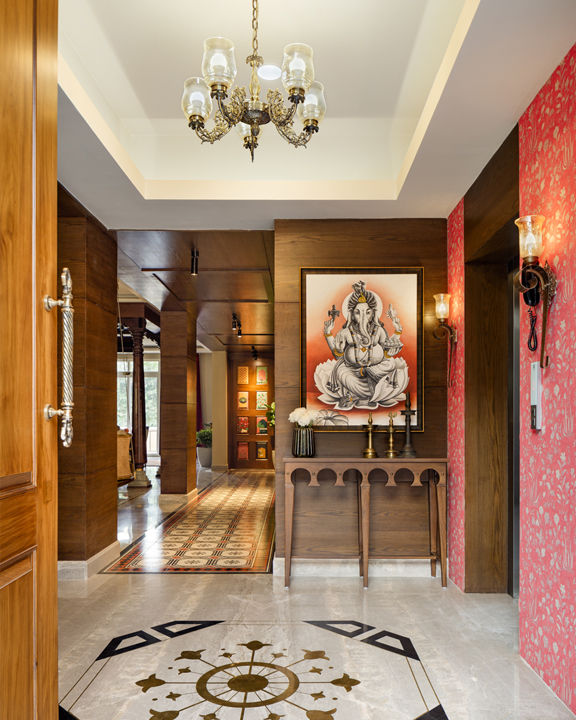
The foyer area gleams in grey Italian flooring with symmetrically patterned brass inlay, while the entry passageway flooring, in the same pattern but smaller, serves as a counterpoint to the avenue. A commissioned hand-painted Ganesha sitting on a console from Nivasa kickstarts the warm and grounded ambience.

The household commemorates its seamless design demarcation with the living-dining-family room trio on the left of the foyer. A Gulmohar Lane pastel blue sofa with a contrasting five by five feet centre table in stained wood carving justifies the spacious living room. The “Spin” jhula from POD, with two circular seats that can face each other, cleverly translates the couple’s idea of their space and upcoming journey. Embroidered curtains that merge with the walls curated Indian prints and patterns for furnishings, and a magnificent piece from Jaipur Rugs envelop the living space like a big hug.

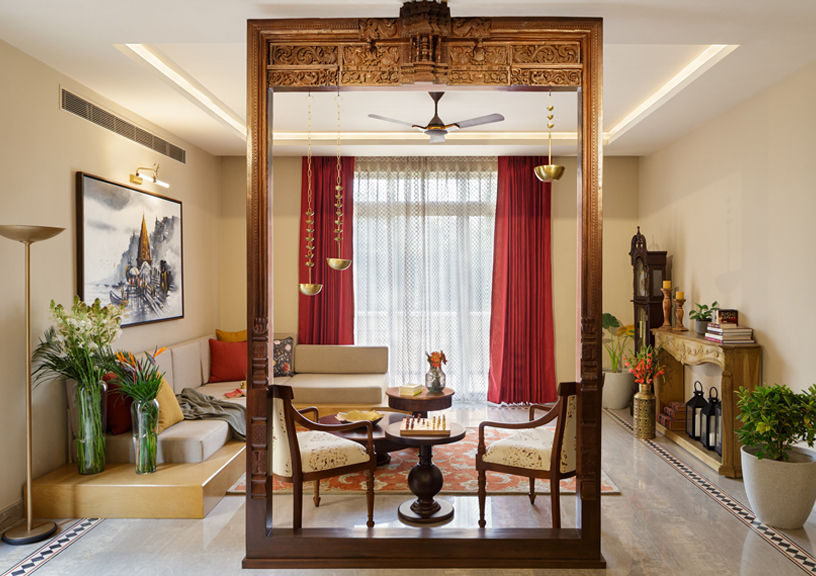
To define the dining and family room’s spatial abstraction, no physical barriers seem present in this large floor plate. However, a Mangalore-tile canopy demarcates the dining space and acts as the visual focal point. Similarly, the family room is semi-detached by a Chettinaad wooden door frame. To lay an optical connection similar to the dining canopy and living room centre table, it is cleverly finished in dark wood. Built on the idea of a traditional “baithak”, the family room exhibits a low Jaiselmer stone seat, rustic-coloured accents and a Benaras city landscape on the wall. Vintage details like a grandfather clock, a chess nook, alternating flooring borders, and cosy garden views give warmth and a sense of idiosyncrasy to this line of living areas.
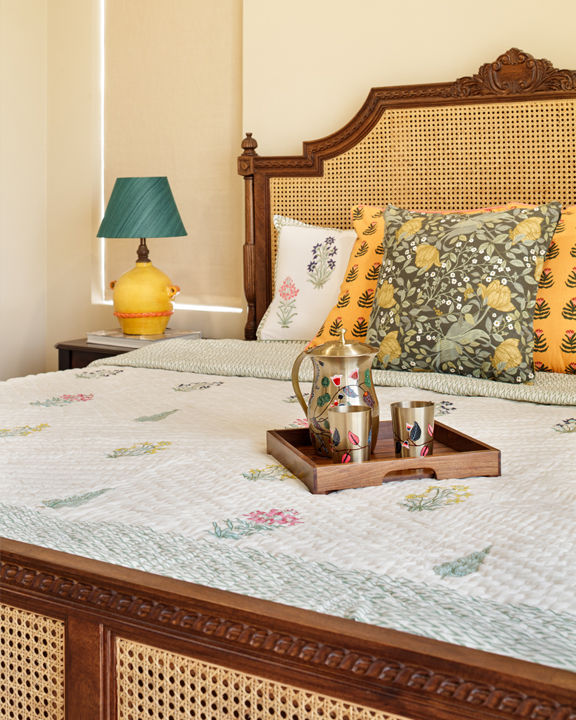
The guest bedroom behind an eight-panelled Picchwai door is bathed in a palette of powder green. This “sunny day” room assembles elements such as panelling and moulding, remarkably imitating classical columns. A symmetrical set-up with a queen size bed in washed green as the focal point and table lamps on either side are laid on conventional patterned black and white flooring. Rattan textures sandwiched between wooden cornice details in the bed, console and wardrobe alongside a bespoke black-crystal chandelier duo and floral motifs tout the subtlety of the space. The master bath extends this antique leverage via embossed golds and metallics.
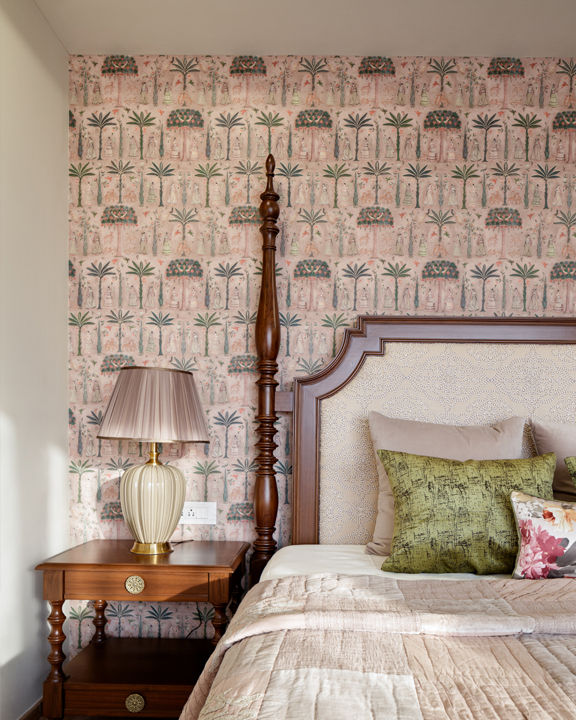

The master bedroom feels like stepping into a pale pink haven of quietness. The skylight-like ceiling detail and Sabyasachi wallpaper paint the perfect ambience for a vintage 4-poster king-size bed. The neo-classical elements continue in this bedroom and bath via printed European tiles and wall sconces. Similarly, the mother’s bedroom is the perfect example of two-toned wooden aesthetics. Laid out in shades of brown, ochre and yellows – this space multiplies in colour and vehemence with pieces from FabIndia, The star piece, a full-length mirror, is tapered to reflect natural light throughout the room, whilst keeping vaastu regulations in mind.

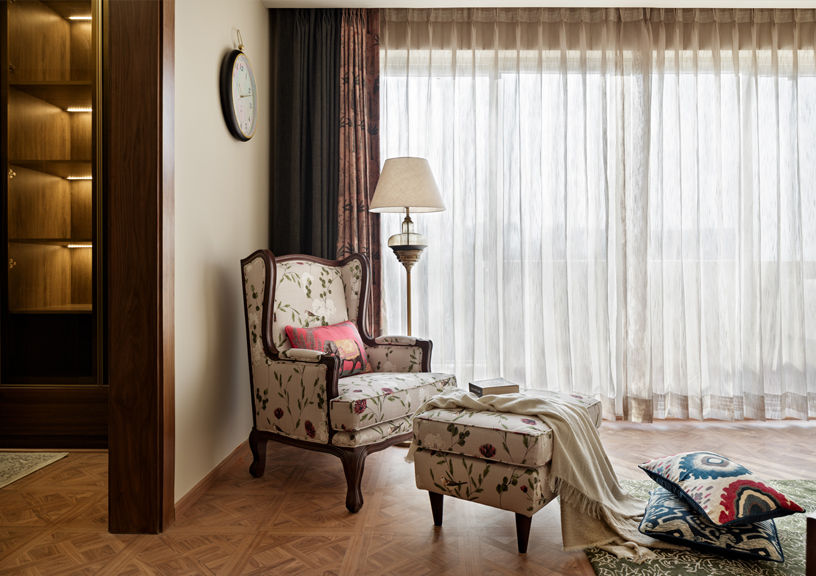
Straight out of an Indo-European film, the kitchen by SpaceWood is a chic take on the blue and white combination. The backsplash tile from HCML features a floral embossed pattern of the shades used for flooring and cabinets. Secondary spaces like the yoga room and study follow a harmonised trail of serene spaces filled with art, functional mainstays and natural light.

With design elements from several Indian cities presented as the colonial era design styles, Atulya is stitched together from common threads of Indian histories and cultures. Catering to the modern lifestyle essentials, the design incorporates functional aspects such as air conditioning, a balance of artificial-natural light and space-wise furniture elements. Simultaneously, sublime shades, prints and textures tone down the visual experience transforming a typical interior plan into a cosy home. From Picchwai art decals to Sabyasachi wall prints – this home has a bit of all things design.
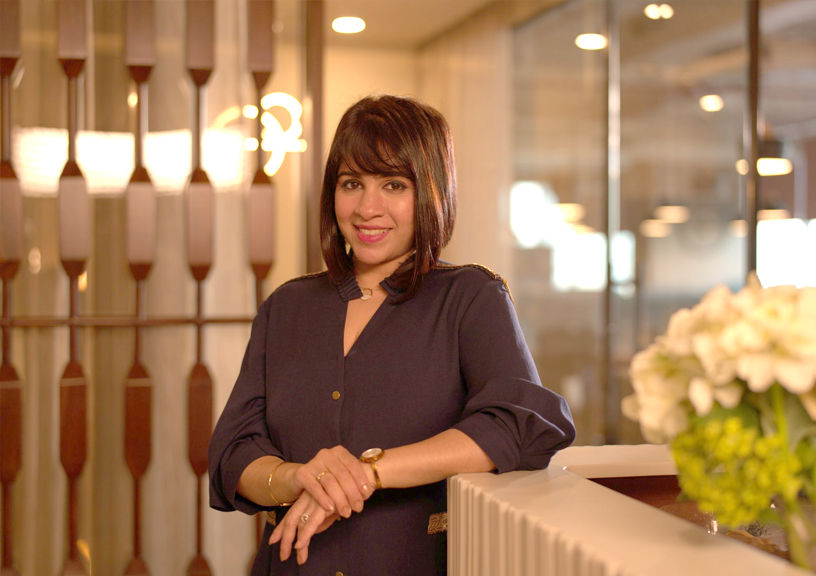

FACT FILE:
Name of the project: Atulya (Marbella Villa)
Firm Name: Envisage
Design Team and Designation: Ar. Meena Murthy Kakkar ( Design Head), Ar. Vishal Kakkar( Business Head), Ar. Tanvi Agrawal ( Architect and Partner)
Website: https://envisageprojects.in/
Location of the project: Marbella Villas, Sec -66, Gurugram
Area (Sq.ft): 6500 sq.ft (built up) approx
Photo courtesy: Fanthome
